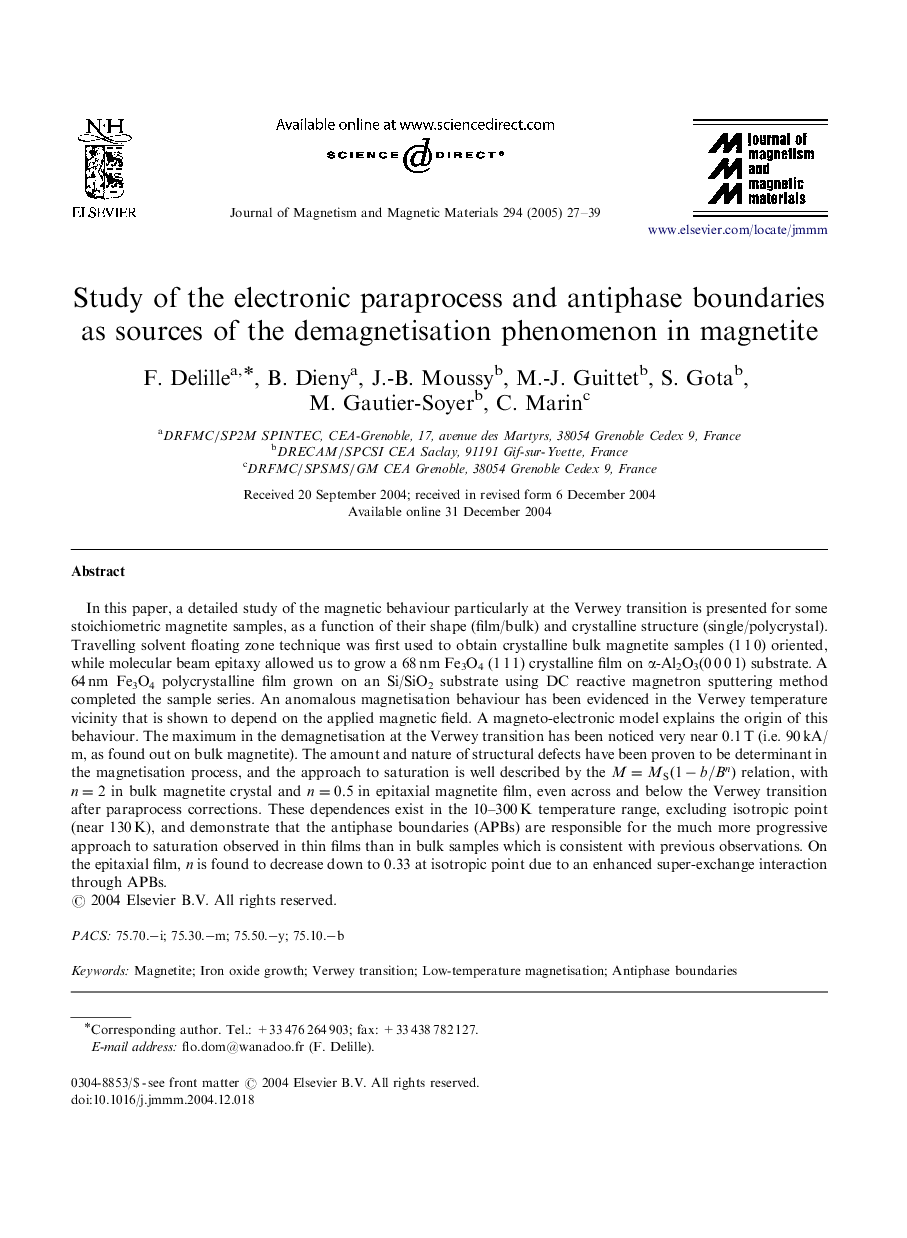| Article ID | Journal | Published Year | Pages | File Type |
|---|---|---|---|---|
| 10710604 | Journal of Magnetism and Magnetic Materials | 2005 | 13 Pages |
Abstract
In this paper, a detailed study of the magnetic behaviour particularly at the Verwey transition is presented for some stoichiometric magnetite samples, as a function of their shape (film/bulk) and crystalline structure (single/polycrystal). Travelling solvent floating zone technique was first used to obtain crystalline bulk magnetite samples (1 1 0) oriented, while molecular beam epitaxy allowed us to grow a 68 nm Fe3O4 (1 1 1) crystalline film on α-Al2O3(0 0 0 1) substrate. A 64 nm Fe3O4 polycrystalline film grown on an Si/SiO2 substrate using DC reactive magnetron sputtering method completed the sample series. An anomalous magnetisation behaviour has been evidenced in the Verwey temperature vicinity that is shown to depend on the applied magnetic field. A magneto-electronic model explains the origin of this behaviour. The maximum in the demagnetisation at the Verwey transition has been noticed very near 0.1 T (i.e. 90 kA/m, as found out on bulk magnetite). The amount and nature of structural defects have been proven to be determinant in the magnetisation process, and the approach to saturation is well described by the M=MS(1-b/Bn) relation, with n=2 in bulk magnetite crystal and n=0.5 in epitaxial magnetite film, even across and below the Verwey transition after paraprocess corrections. These dependences exist in the 10-300 K temperature range, excluding isotropic point (near 130 K), and demonstrate that the antiphase boundaries (APBs) are responsible for the much more progressive approach to saturation observed in thin films than in bulk samples which is consistent with previous observations. On the epitaxial film, n is found to decrease down to 0.33 at isotropic point due to an enhanced super-exchange interaction through APBs.
Related Topics
Physical Sciences and Engineering
Physics and Astronomy
Condensed Matter Physics
Authors
F. Delille, B. Dieny, J.-B. Moussy, M.-J. Guittet, S. Gota, M. Gautier-Soyer, C. Marin,
